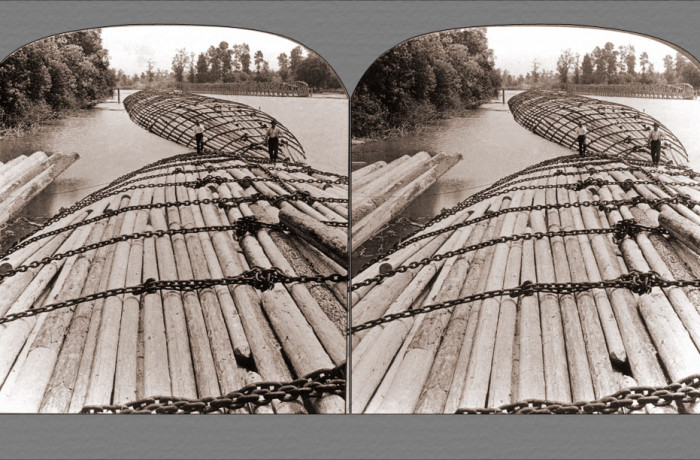Great Chained Log Rafts on the Columbia River, Washington.
The view here suggests what happens to many of these logs. The timber cut in the upper reaches of the Columbia or along its tributaries is hauled to the water's edge and placed in great rafts. The construction of one of these rafts is here beautifully shown. The logs are built up into piles that resemble a whaleback steamer on the Great Lakes. They are held together by heavy chains, and usually several such rafts are floated down the river in a group. The method of loading the logs is suggested by the half dozen that you see on the left. Little engines often furnish the power to drag them on the raft. Horses, hitched to a capstan, are sometimes used. Again, if the logs are not too large, and the rafts are not too high, the logs may be handled by men with pike poles and cantilever hooks.
For days and days these huge rafts glide down the Columbia River towards the Pacific. When they reach the milling city, they are towed inside a great boom where hundreds of other rafts are moored. Nearby are the large sawing and planing mills. here gang-saws, a number of saws placed side by side in a steel frame, rip them into boards, sawing as many as 20 boards at a single passage.

